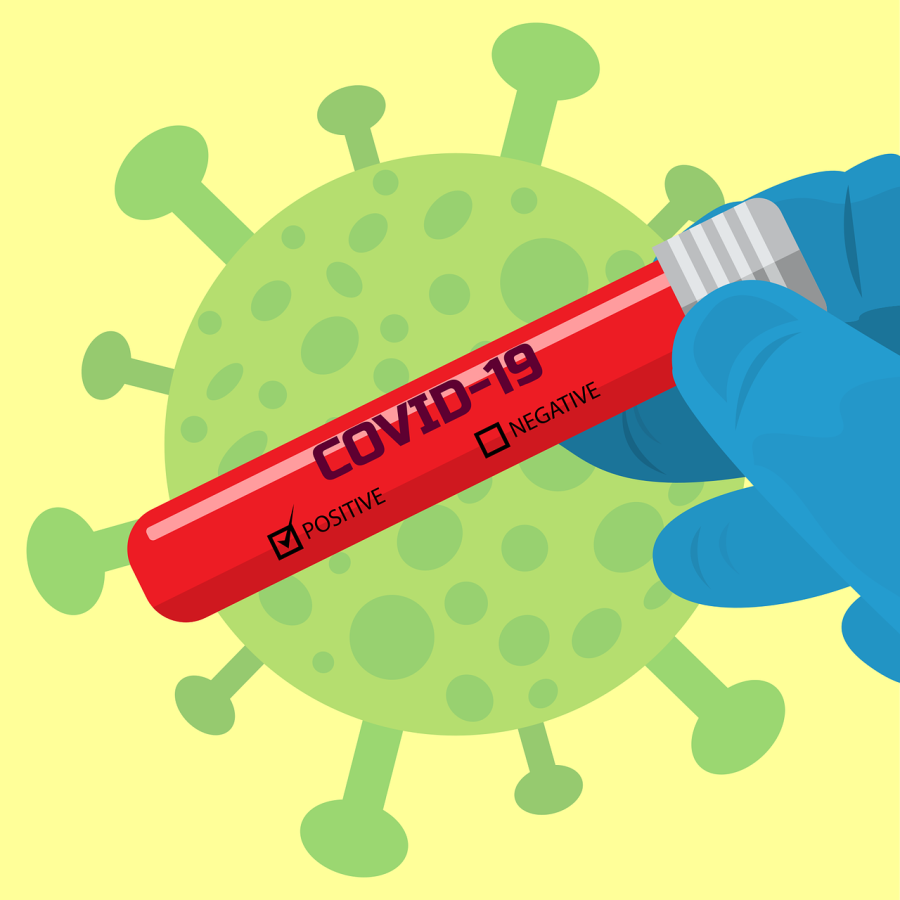Stigma: A Silenced COVID Symptom
March 17, 2022
Amidst the countless tests we take each week, the test we have grown to fear most is the one in which a positive result is not the outcome we’re hoping for. This infamous, anxiety-inducing, seemingly impossible-to-obtain test: the COVID-19 test.
“Your COVID-19 test is POSITIVE. Please immediately SELF-ISOLATE” is a text no one wishes to receive. The dread of having to tell the people you’ve been in close contact with that you have tested positive overwhelms your body—somehow much more so than the fear of having a SARS-CoV-2 strain looming in your respiratory system. What will they think of me? They’ll think I’m unsafe. They’ll blame me if they test positive.
While all realistic thoughts, the truth is that with more than 30% of the population still unvaccinated, and with new variants looming around, moral failing should be the least of our worries. COVID-19 is contagious in and of itself, and “the reason that this virus is spreading so easily is not because we’re not good enough, it’s because it’s endemic, it’s highly transmissible, [and] has a long infectious period,” Monica Gandhi, an infectious diseases specialist with the University of California, San Francisco, told HuffPost. Twenty-two months into the pandemic, one would think that the stigma behind contracting the virus is long over, since every day brings a new fact to the table, but that’s not the case. So, why is it that humans must find a blame for everything?
Well, since the onset of the pandemic, COVID-19 has been coupled with wearing a mask, distancing from family and friends, and living a digital life in order to save lives. But what happens when a species that innately craves social connection abruptly turns off its social buttons? We seek a reason for what wreaked havoc. As humans, according to Verywell Mind, “it’s tough to be angry at the virus itself.” We “may want to believe the virus can be controlled as long as no one makes ‘poor decisions.’” Thus, it becomes simple to point fingers at those who can not follow guidelines, whether it be due to social, economic, or a variety of personal reasons. And what transpired from the finger-pointing was a reproachful attitude toward those who test positive, with the assumption that anyone who contracted the virus did not abide by the COVID-19 measures that are so difficult for us humans to follow.
However, this all-or-nothing attitude invalidly places more of a burden on people who are physically incapable of following guidelines.
Here are key social determinants of health, according to the CDC:
- Neighborhood and physical environment (limited housing options, crowded conditions)
- Lack of access to quality healthcare
- Essential work (cannot work from home)
There is only such an extent some people can go to obey protocols, while simultaneously holding their life together, and shaming people for doing the most they can only brings us into a state of regression. Yet blaming those who test positive was instilled from the very first letter that began with “This message is to inform you that a member of your community tested positive for COVID-19,” leaving readers with the million-dollar question: Who? Which member? Asking these types of questions makes eliminating the virus such a futile quest. We have turned a positive case into a victim not of the virus but of shame.
At the end of the day, positive change doesn’t come from stigmatizing a disease. Rather, it comes from being conscious of your role in educating others and making society aware of the obstacles that some of us may face. So next time you receive the COVID-19 weekly update about positive cases, don’t go asking the unnecessary questions. Instead, know that some individuals are more vulnerable than others, and placing a badge of shame on those inflicted only creates more harm.

















































































































































